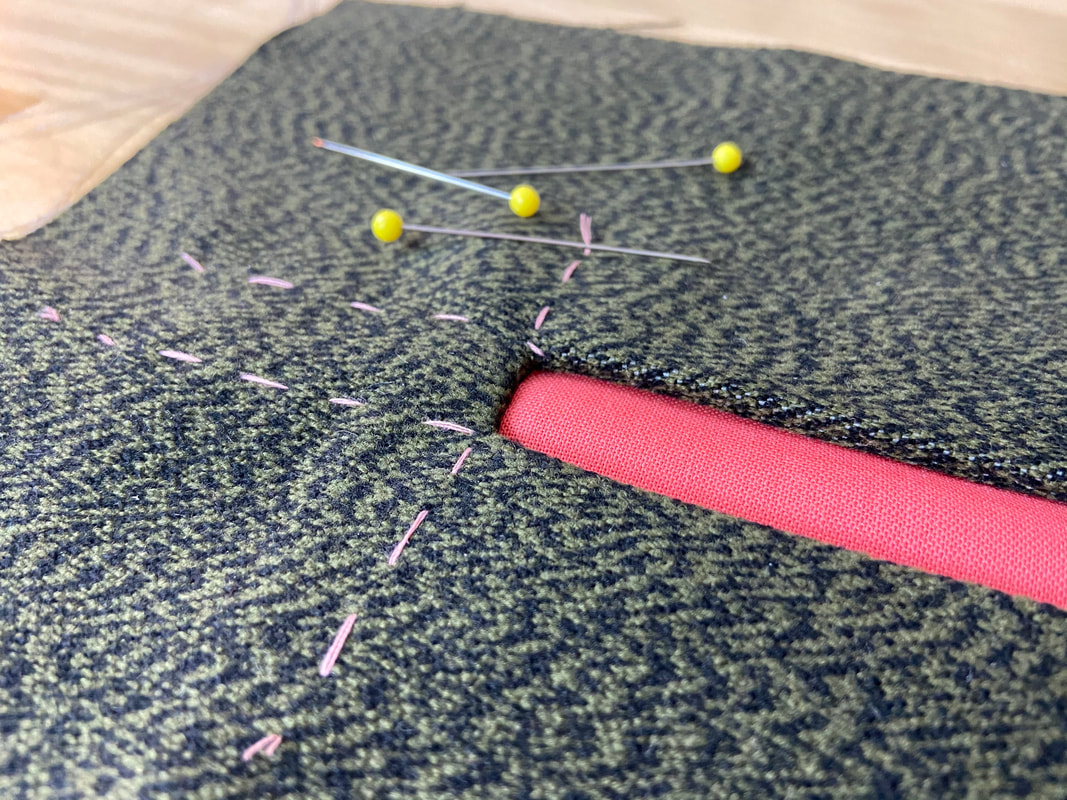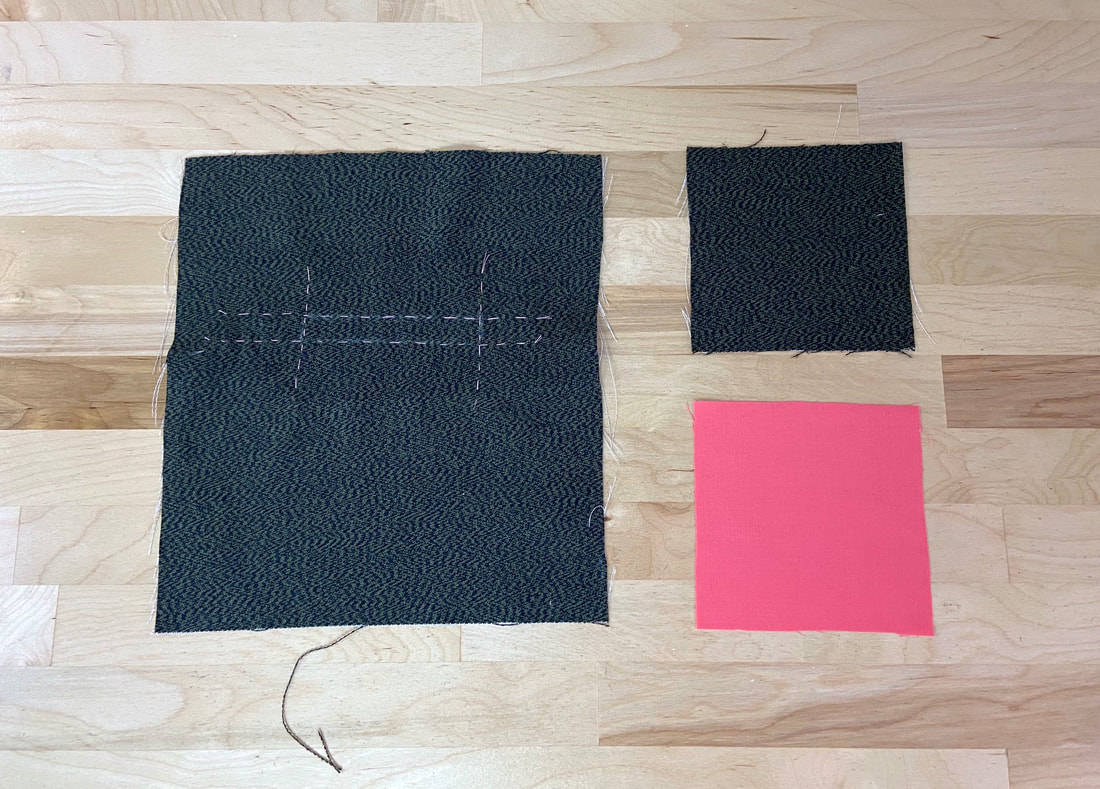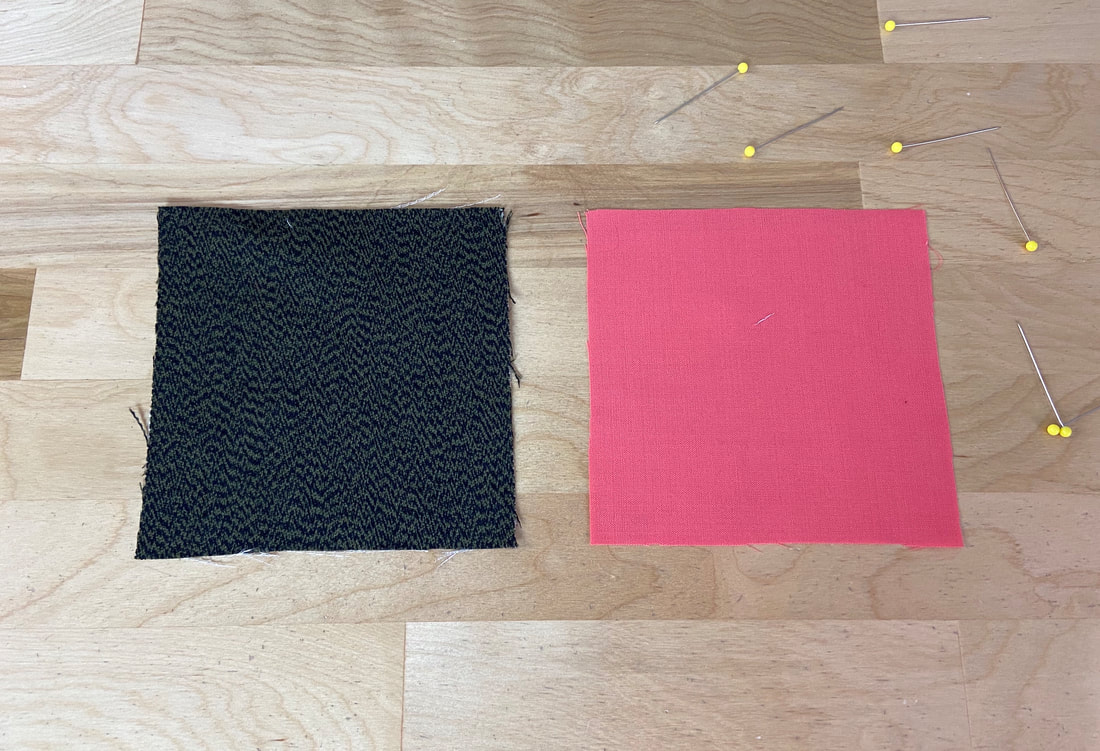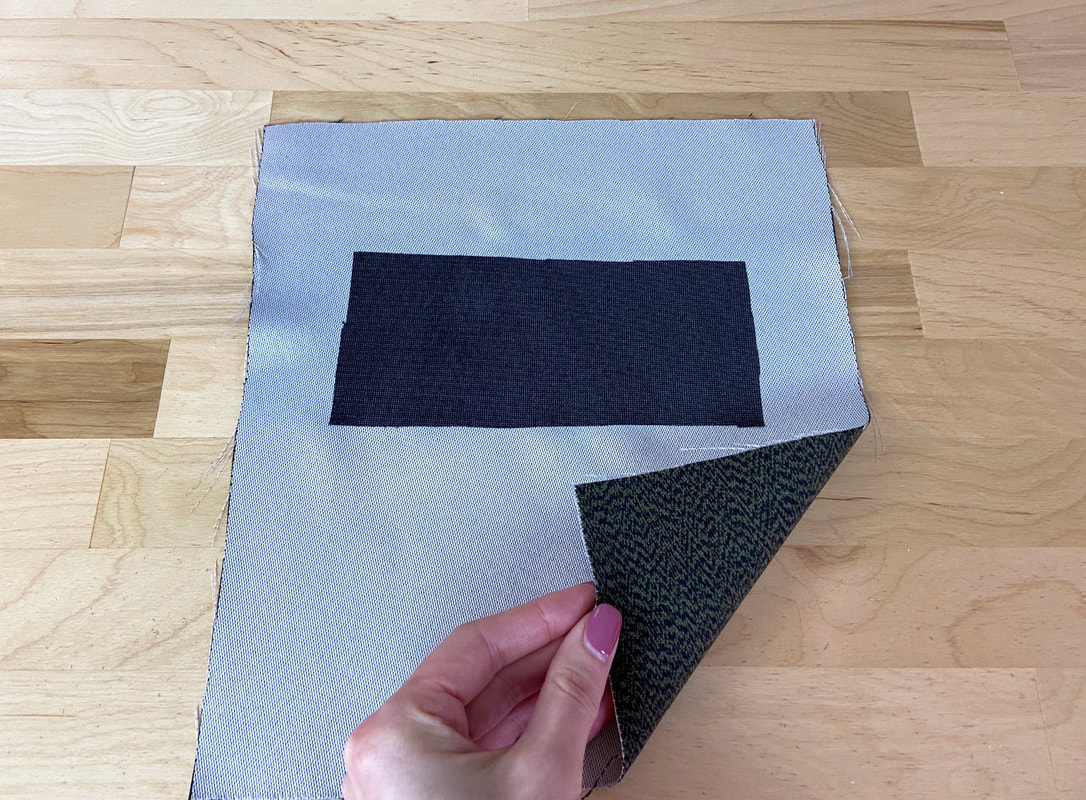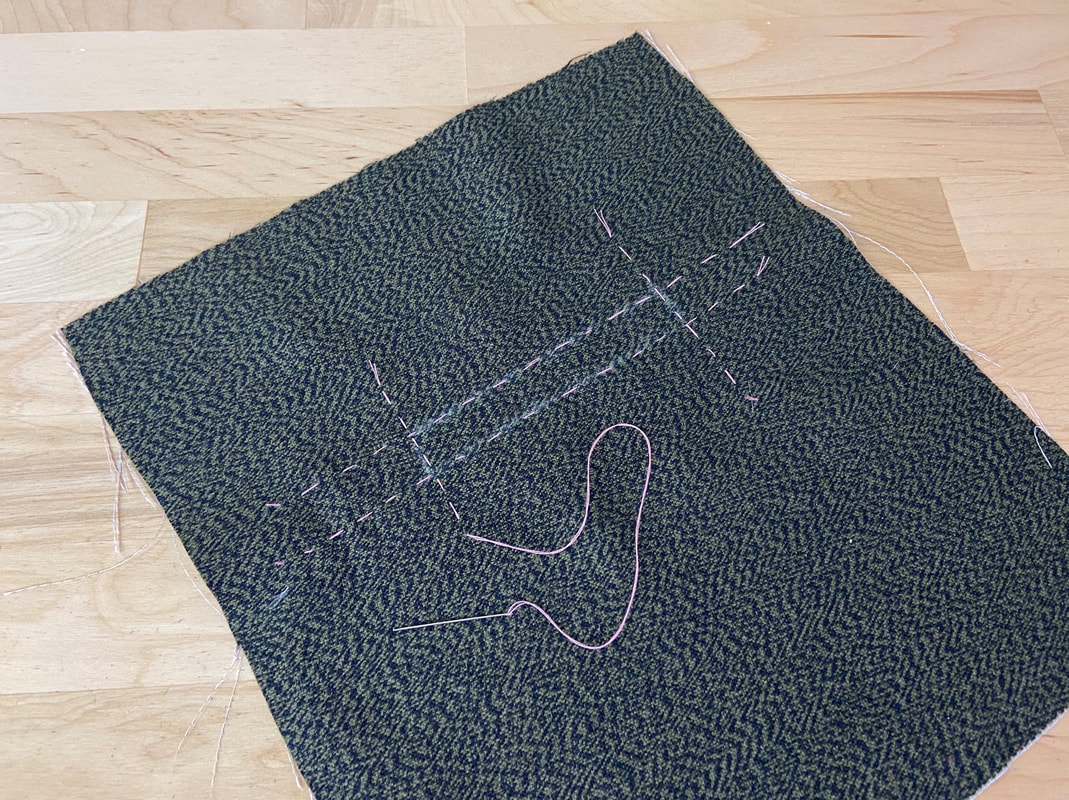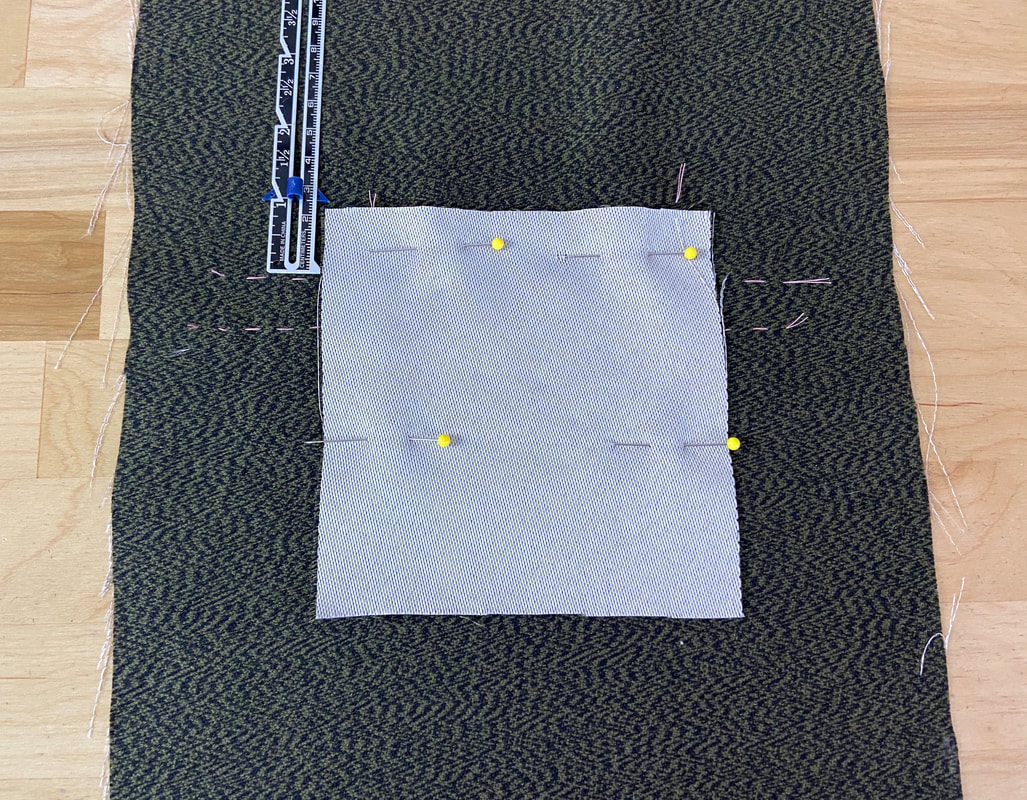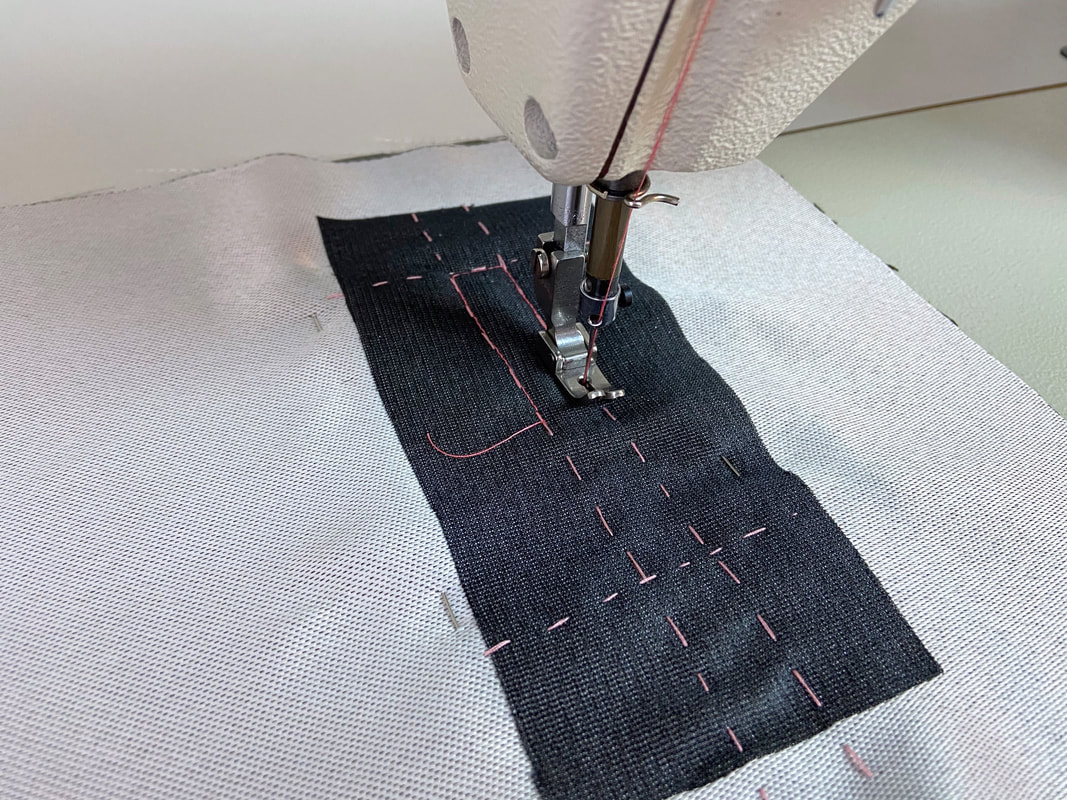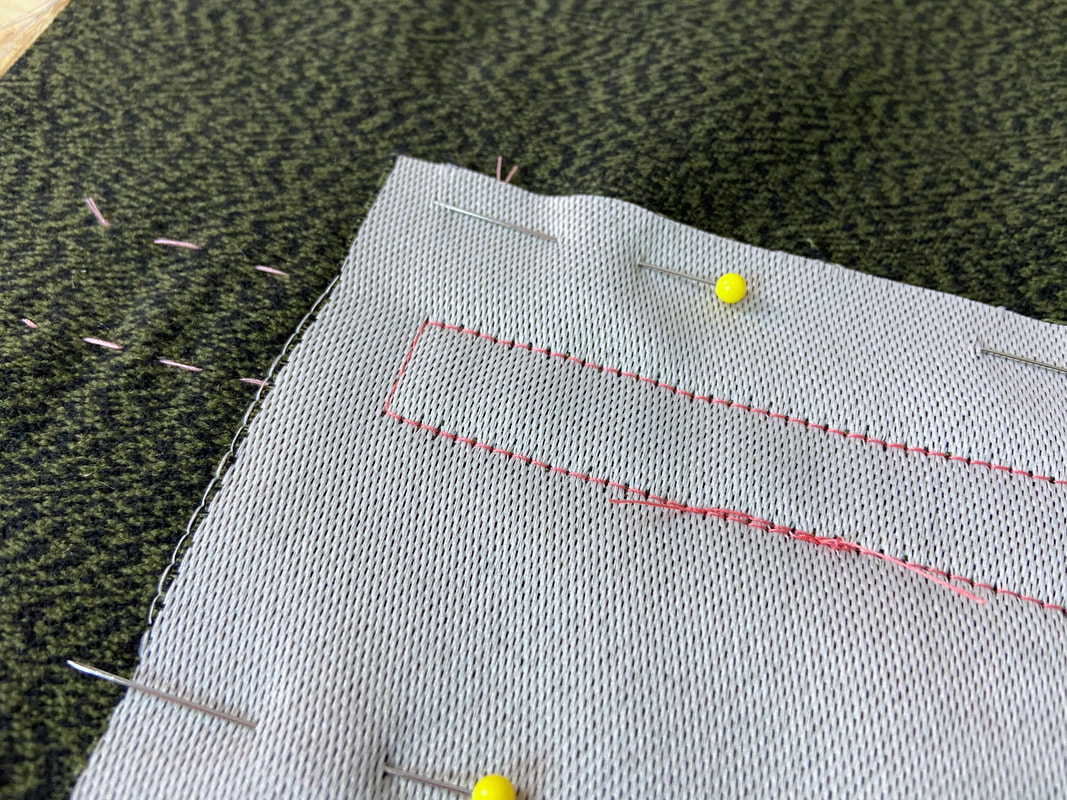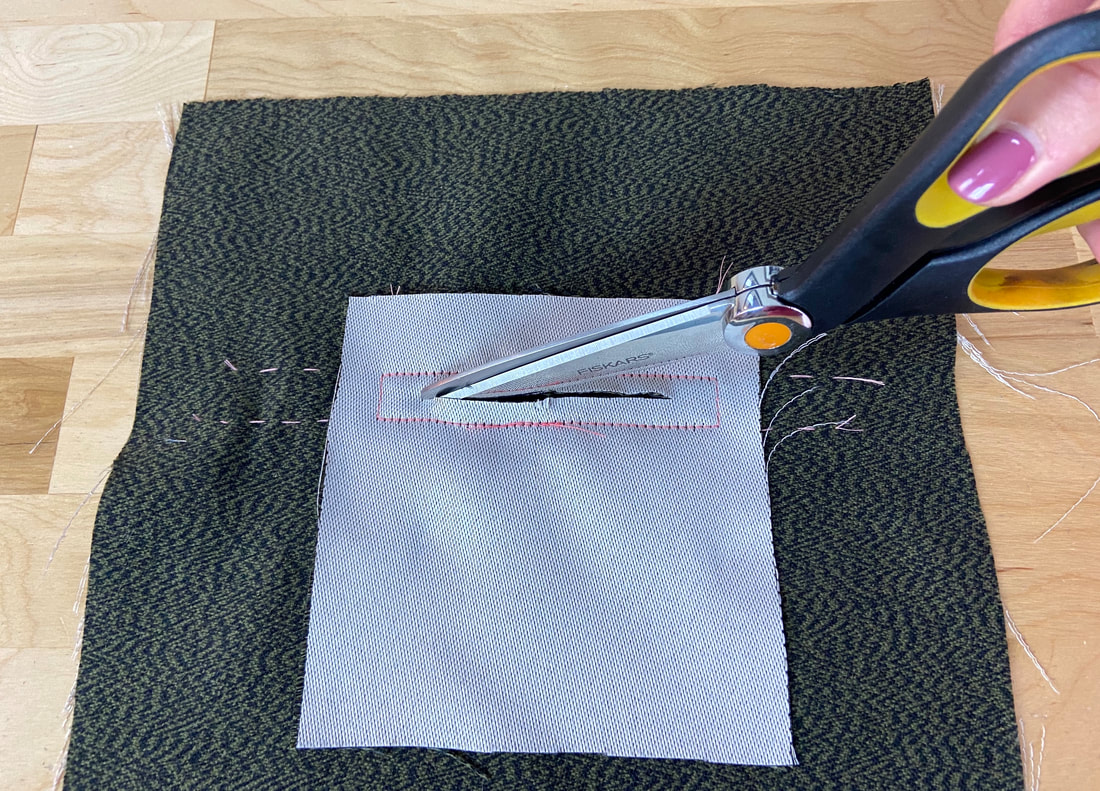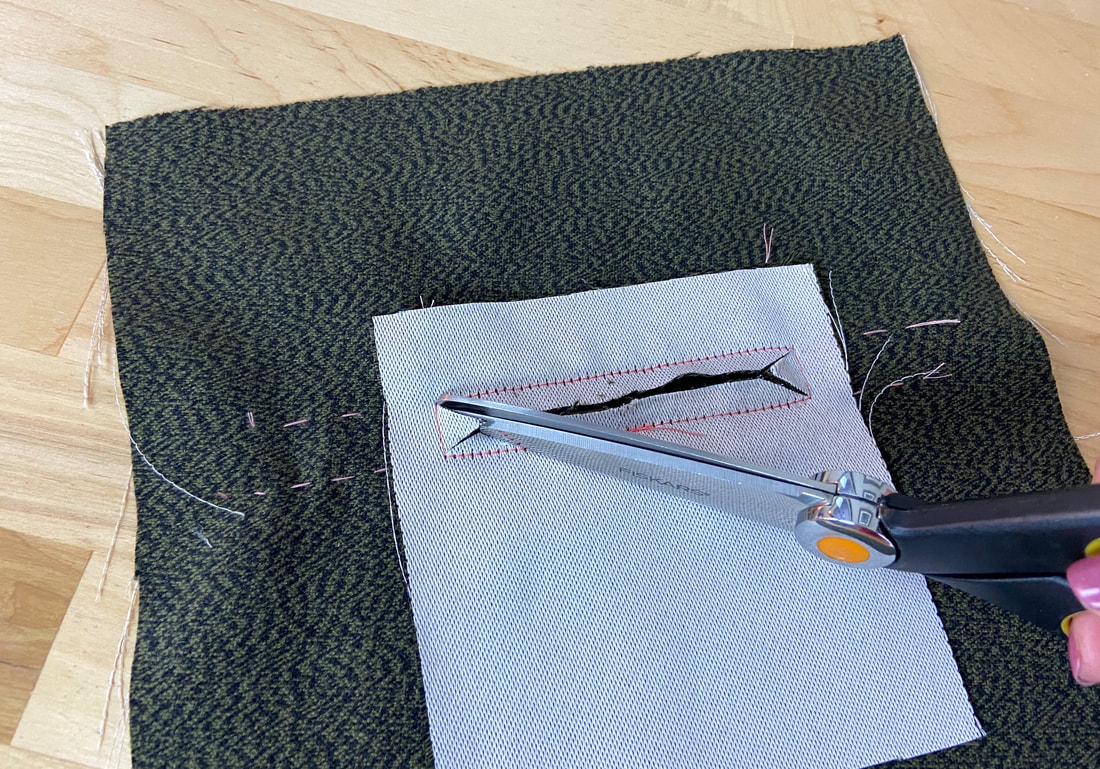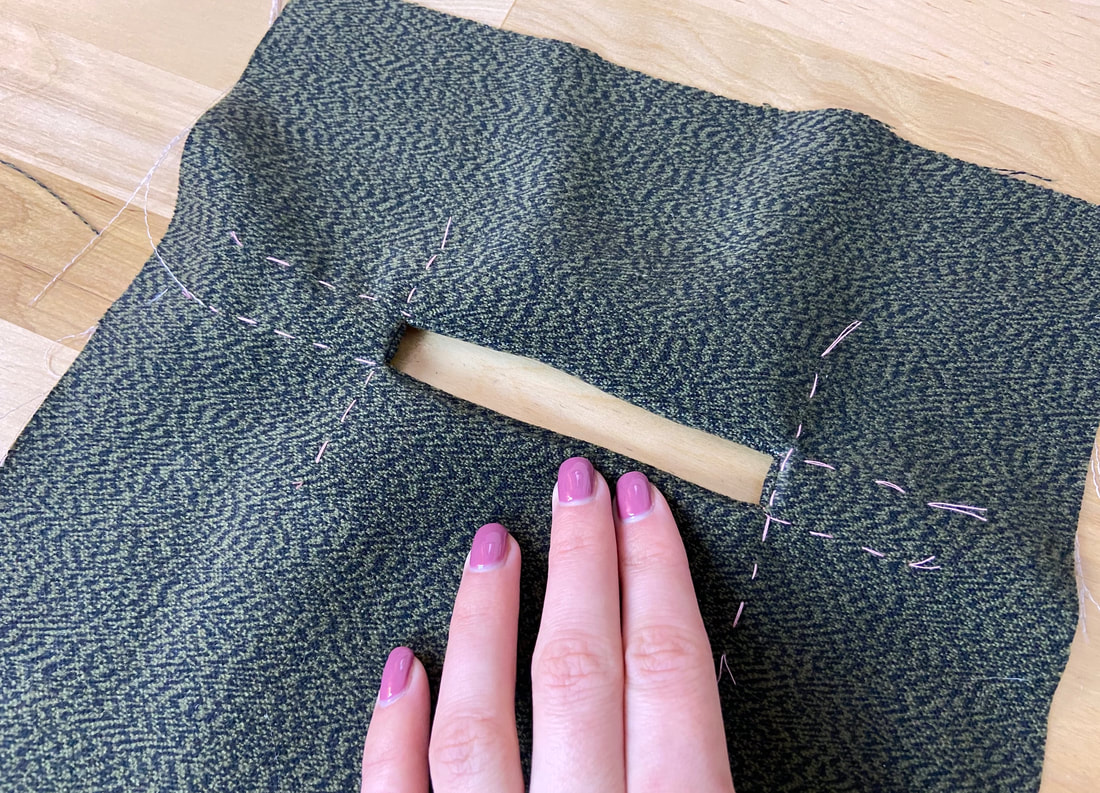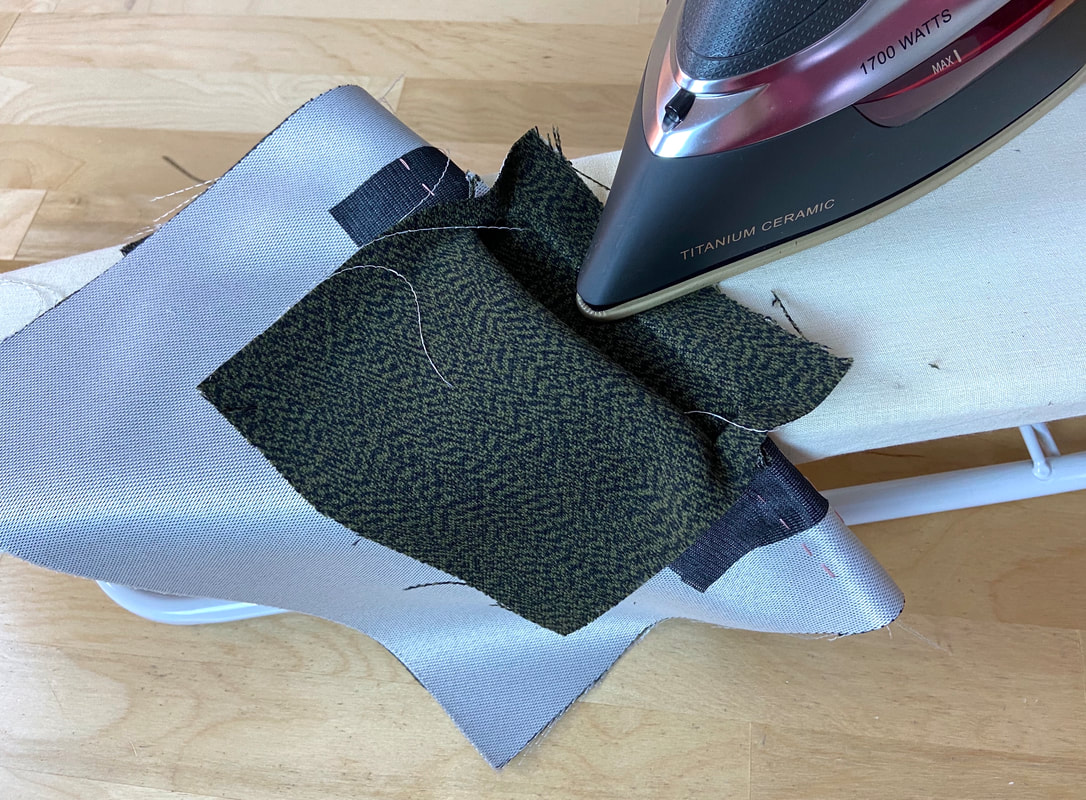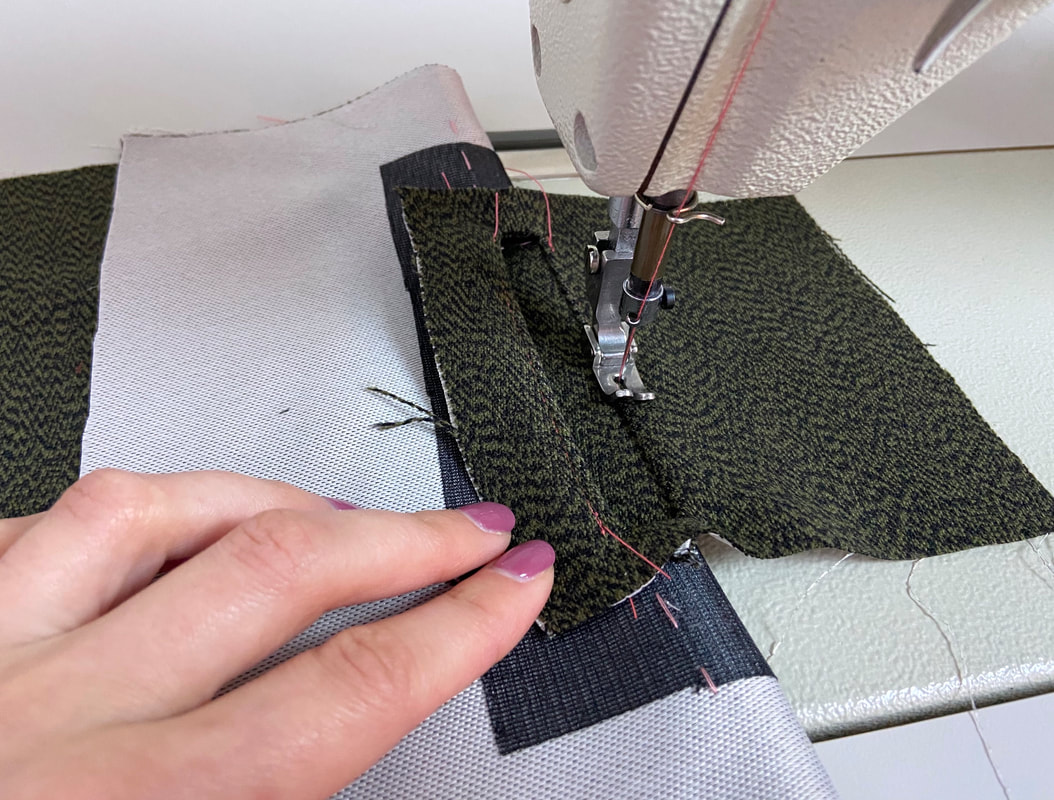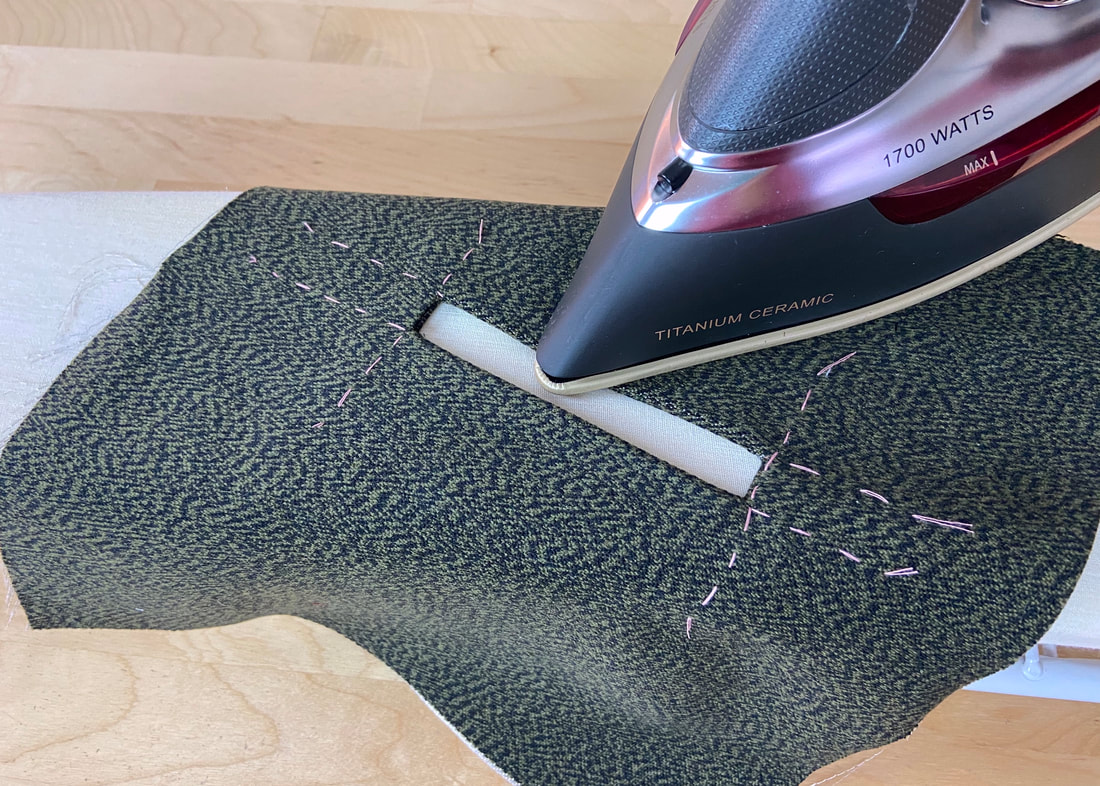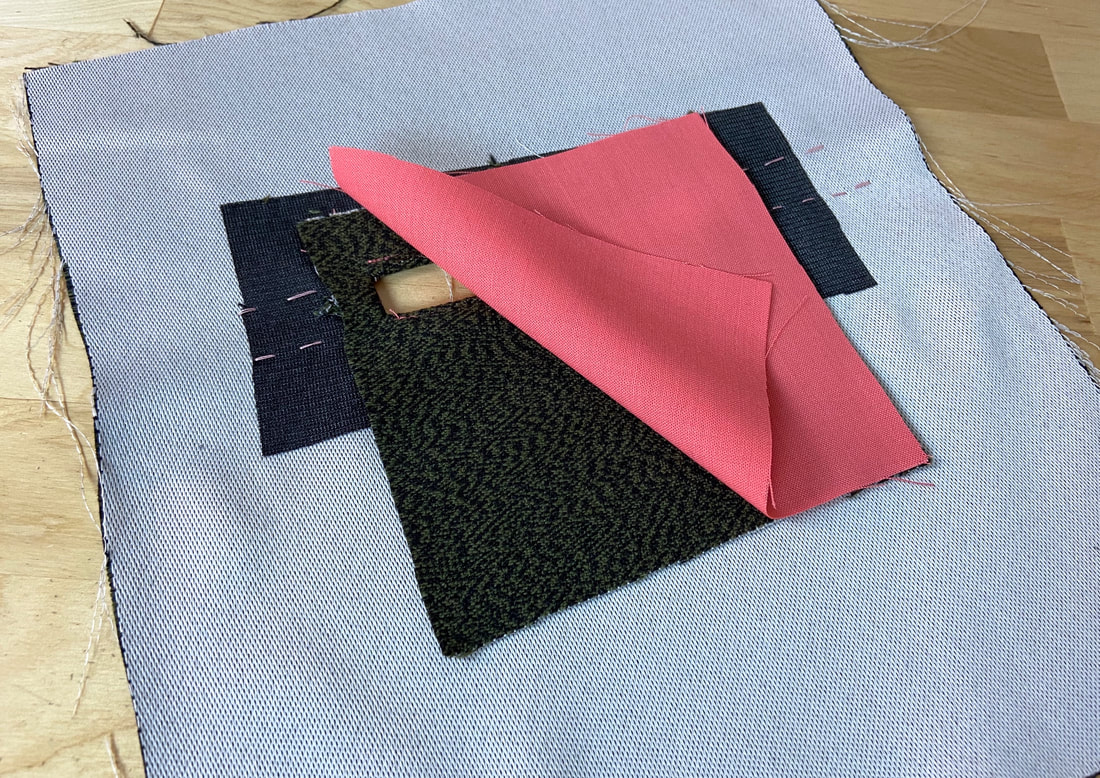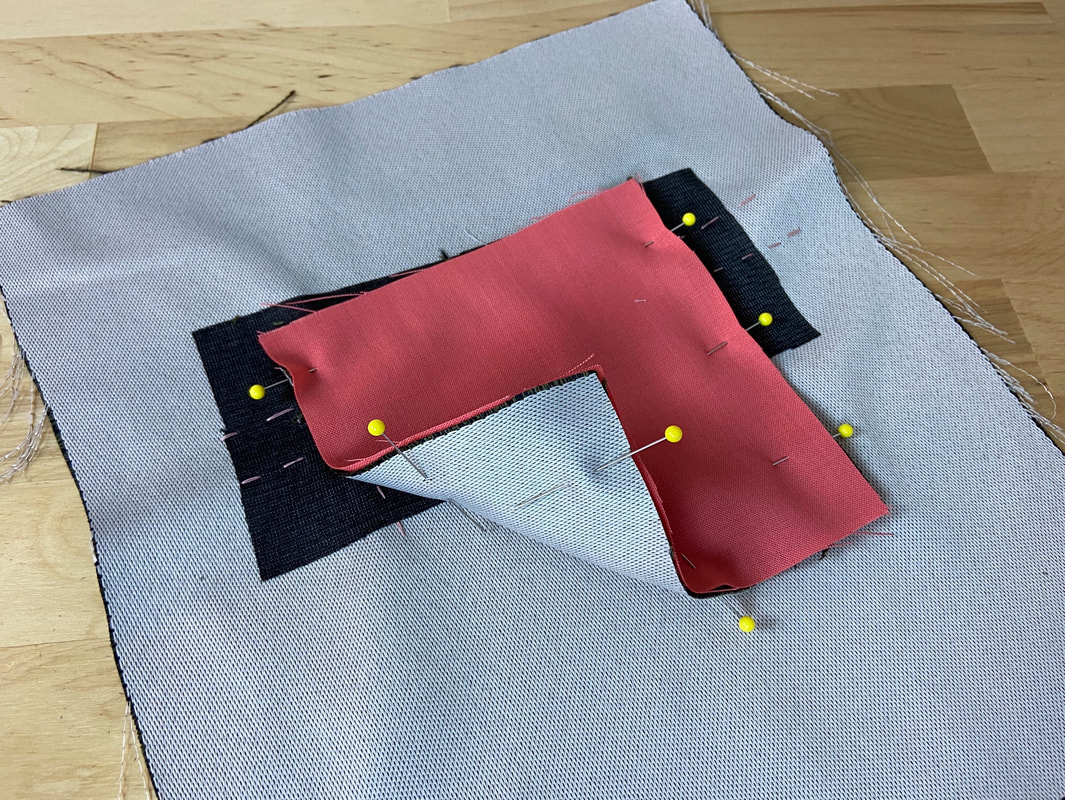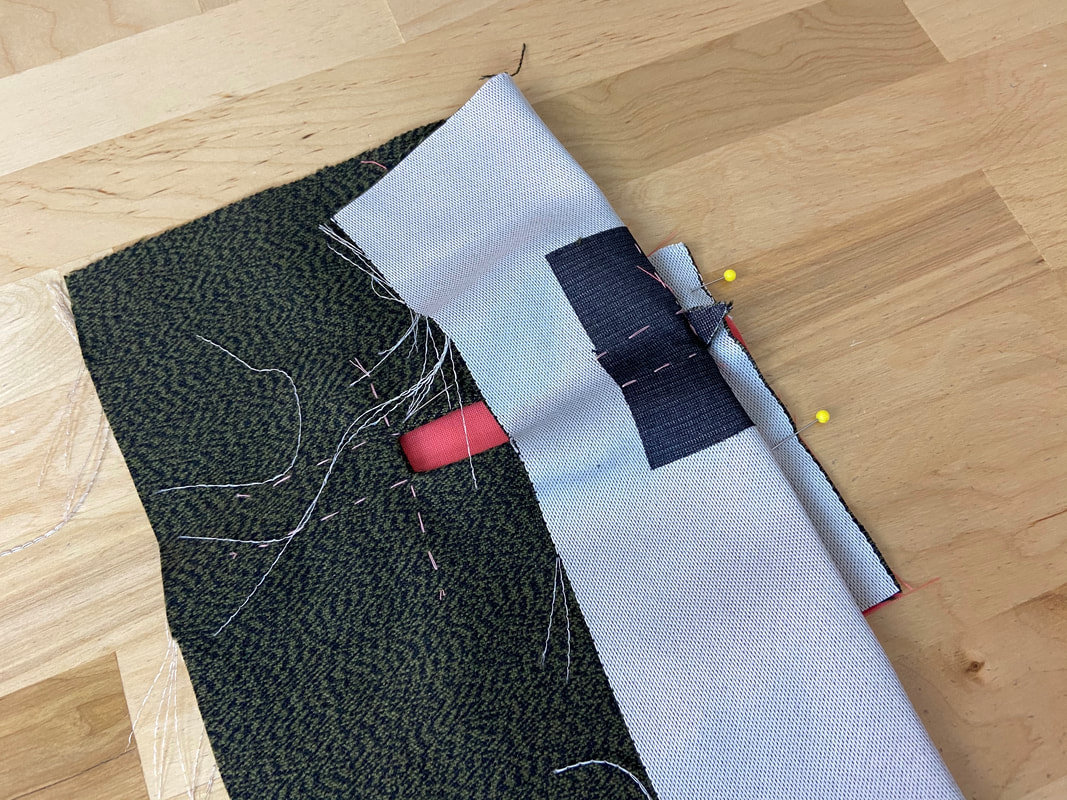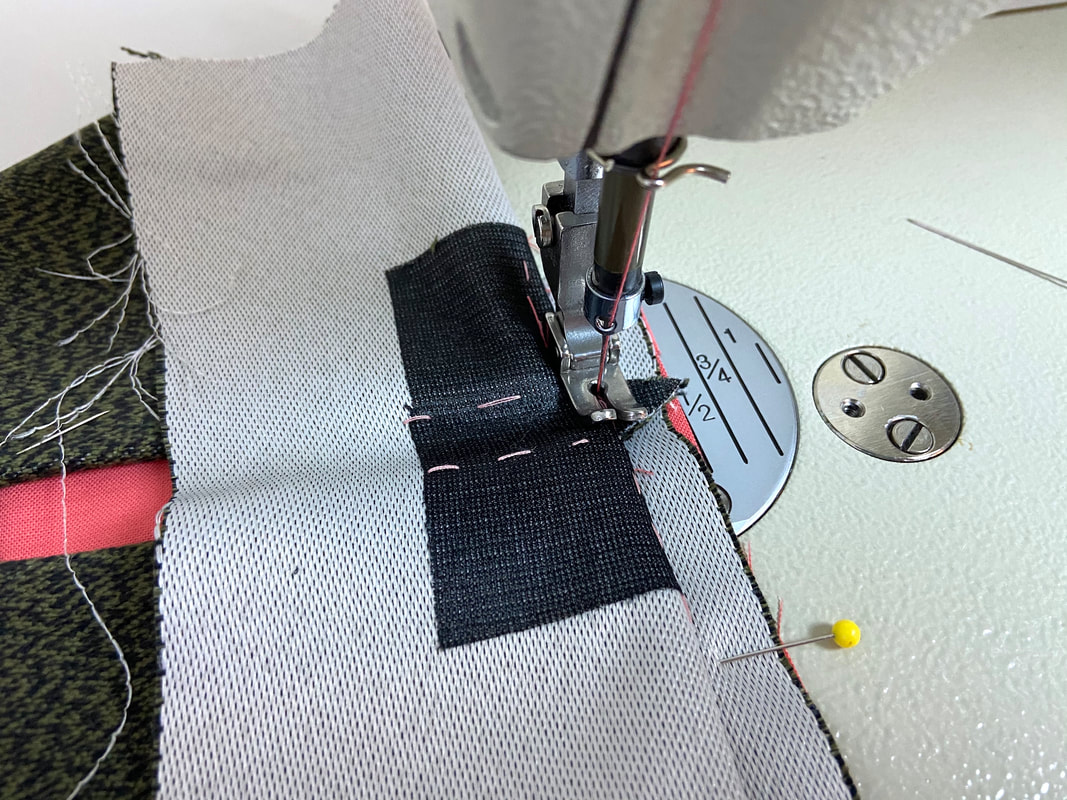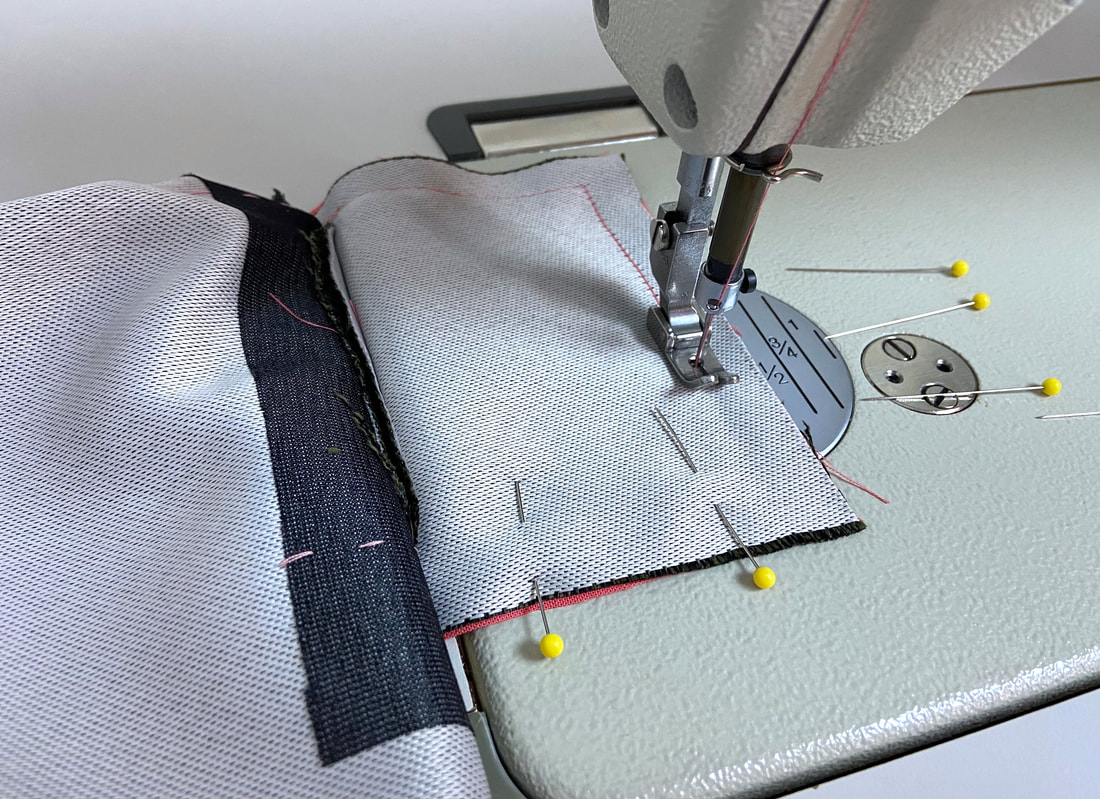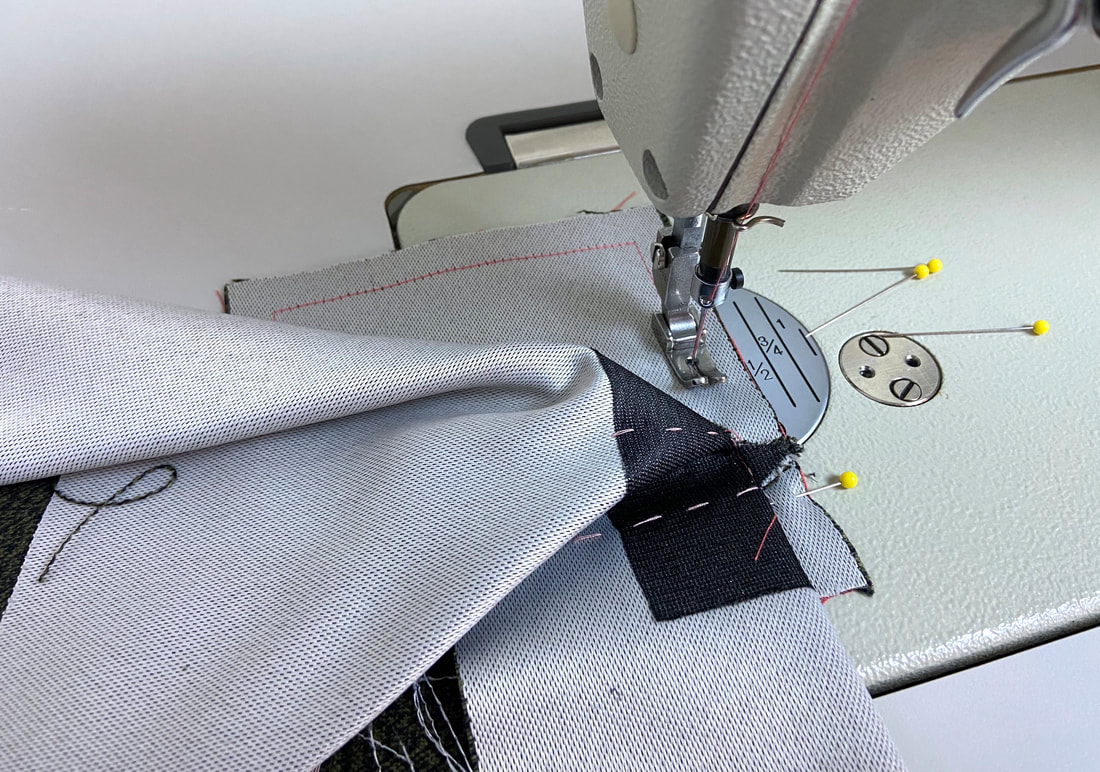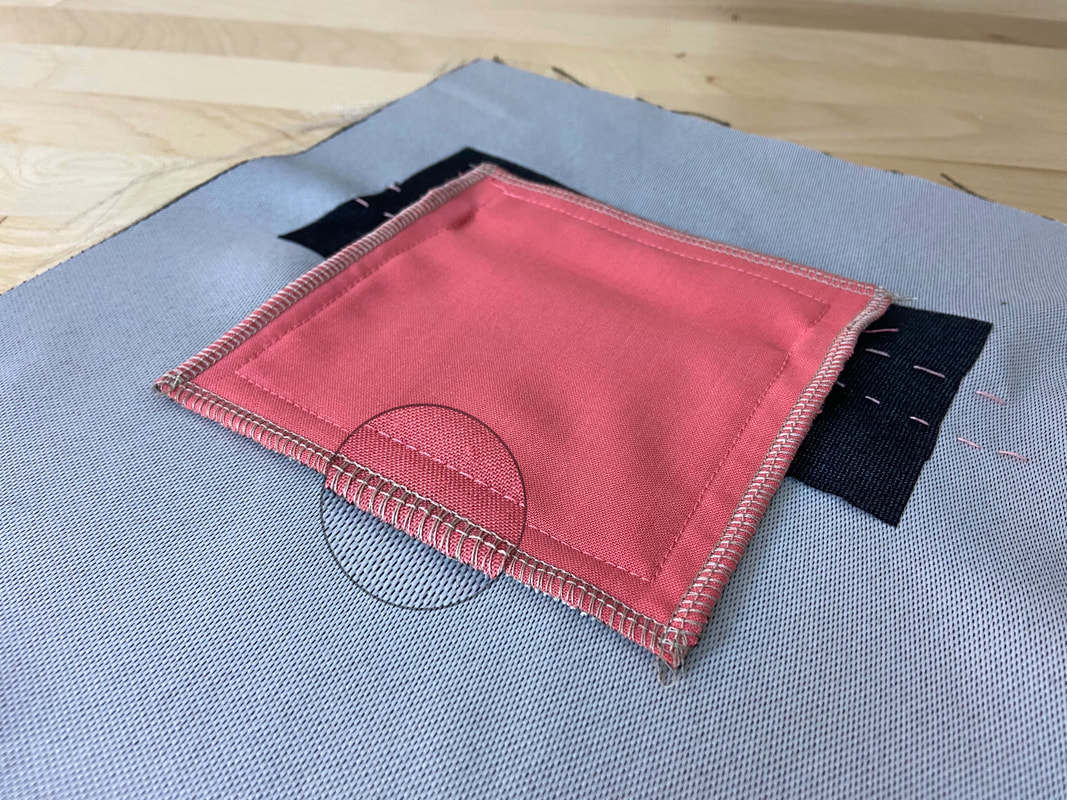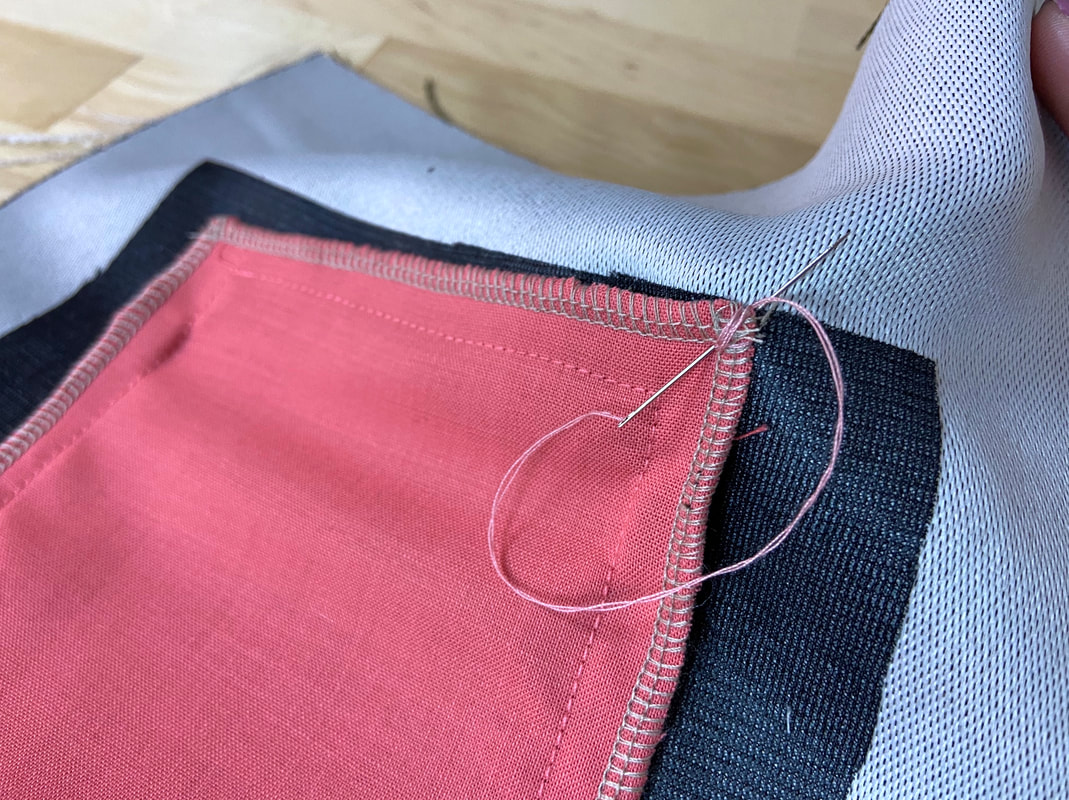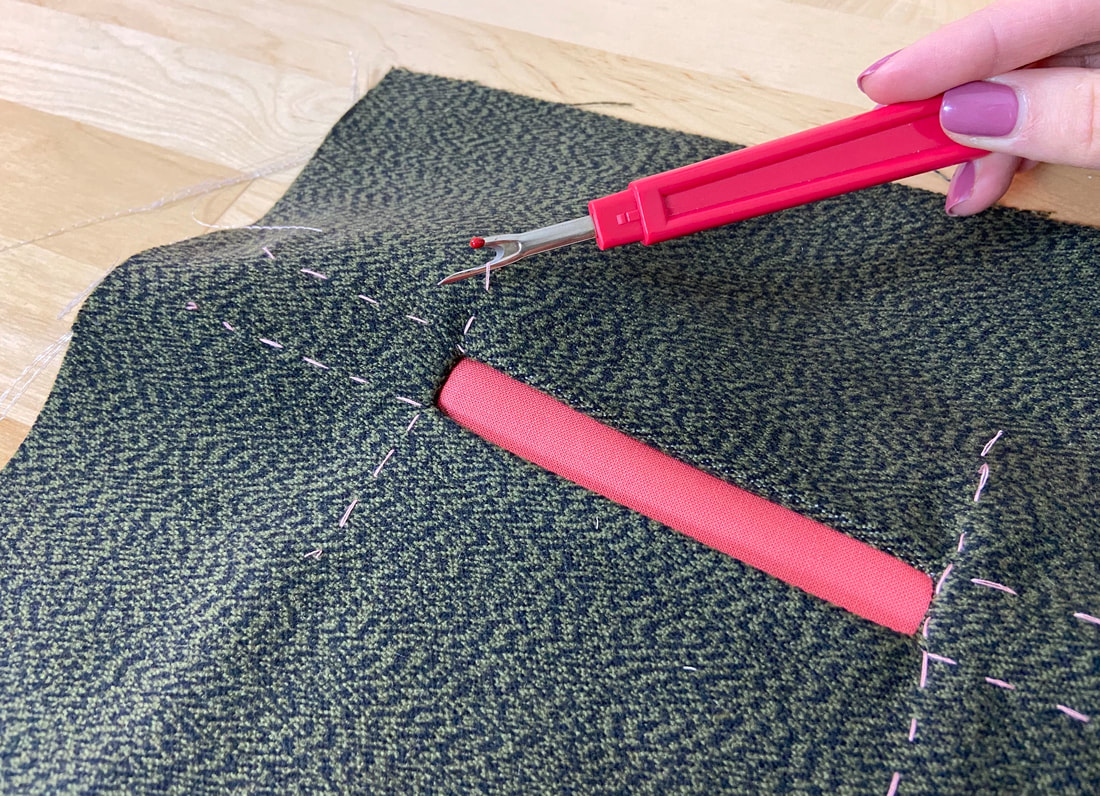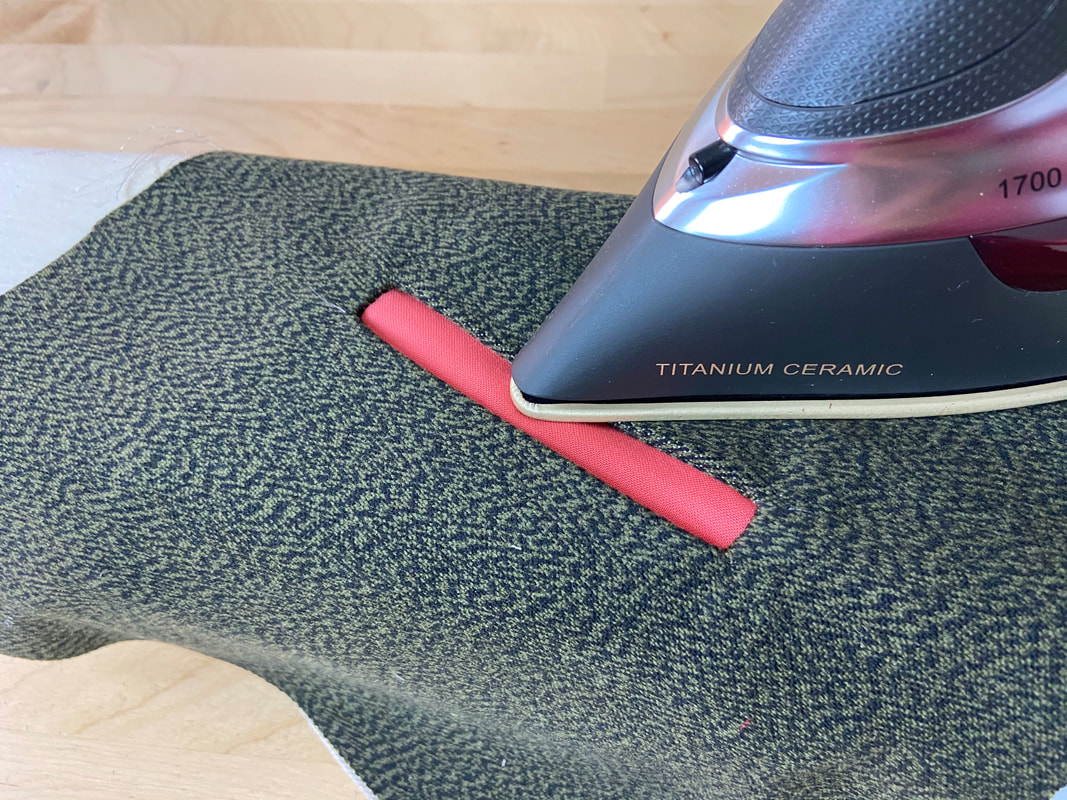Start by cutting two identical pocket pieces that are 1” wider than the desired pocket width and 1” longer than the desired pocket bag and pocket opening depth.
In this example, the finished rectangular pocket opening will be 4” long and ½” tall. Thus, the pocket bag pieces are 5” in length by 5” in width.
1. Cut the two pieces out of the fabric of your choice. In this tutorial, the facing is cut from the same fabric as the garment while the pocket piece is a contrast fabric that will be visible from the right side of the finished application.
2. Interface the wrong side of the garment layer at the exact location of the rectangular pocket opening. The interfacing should extend about 2” beyond all pocket edges.
3. Using a hand basting stitch, mark the desired final shape of the pocket as shown. You may need to use tailor’s chalk to mark a few preliminary lines first.
4. With the garment on its right side, align one of the pocket pieces such that its top edge extends 1” past the top basting line and ½” on each side as shown. Insert pins to hold the layers in place.
5. Flip the garment on its wrong side and machine stitch the rectangular pocket opening following the hand basting lines carefully. Overlap the start and end of the stitching as shown.
6. Slash down the center of the rectangle through both fabric layers, stopping at about ½” away from each end.
7. At these two locations, slash into each corner as close as you can to the stitching, but be careful not actually cut through it.
8. Flip the pocket layer to the wrong side of the garment through the slashed opening. Straighten the edges and hand-press to flatten them.
9. Next, iron the pocket layer along the top and bottom seams with the seam allowance pointing away from the opening as shown. Understitch the pocket layer next to its opening edges catching all seam allowances underneath.
10. Iron the finished pocket opening flat.
11. Last but not least, align the other pocket piece on top of the stitched one such that face sides are touching and all outer edges align as shown. Insert pins perpendicularly to hold the layers together.
12. With the garment on its face side, peel back the garment layer on each side of the pocket opening to expose the triangle cutouts
13. Using a small stitch length, stitch at the base of the triangle catching the pocket pieces underneath. Repeat on both sides.
14. To complete the functional pocket, stitch at ½” seam allowance to seal and complete the pocket bag.
15. Apply an overedge stitch to clean finish all outer edges. In this case, a serging stitch is used.
16. Slip-tack the top corner of the pocket bag to the garment layer underneath. No stitching should be visible on the face of the garment.
17. As a final step, remove the hand basting and give the pocket application one last press for a clean, professional finish.

